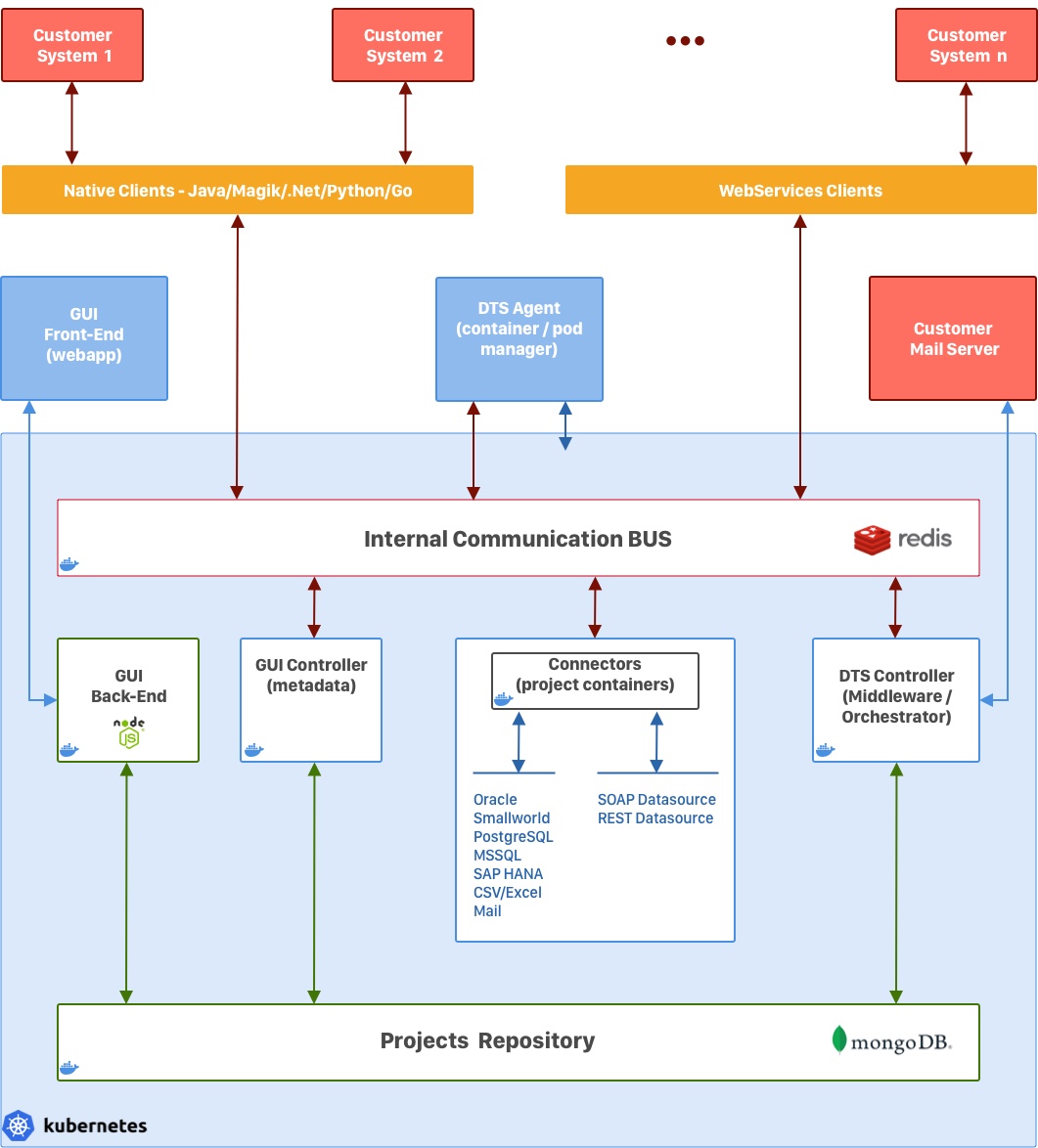DTS functions as a distributed middleware layer based on multiple interacting modules.

Depending on their type and purpose, modules can be deployed in containers, stand-alone, or as part of other applications.
The types of modules employed by DTS are:
Container |
Description |
In Cluster? |
Internal Communication Bus (Redis) |
The Redis messaging system used by DTS |
Yes |
Projects Repository (MongoDB) |
The Mongo database used internally by DTS |
Yes |
GUI Front-End |
The in-browser part of the GUI webapp |
No |
GUI Back-End |
The JS webapp which serves as the GUI Engine |
Yes |
Houses the back end of the GUI |
Yes |
|
The main middleware module |
Yes |
|
Connectors (Producers) |
Generic data connector which is instantiated as specific producers |
Yes |
Independent module which serves aggregation requests for a specific project |
Yes |
|
The proxy module that allows DTS to control the cluster it's deployed in. |
No |
|
Native Clients |
Bespoke DTS clients, based on the Client libraries |
No |
Web Service Clients |
REST/SOAP webservices automatically generated by DTS to act as clients |
No |
![]() Please see the Communication section for information on the communication paradigms used by DTS
Please see the Communication section for information on the communication paradigms used by DTS